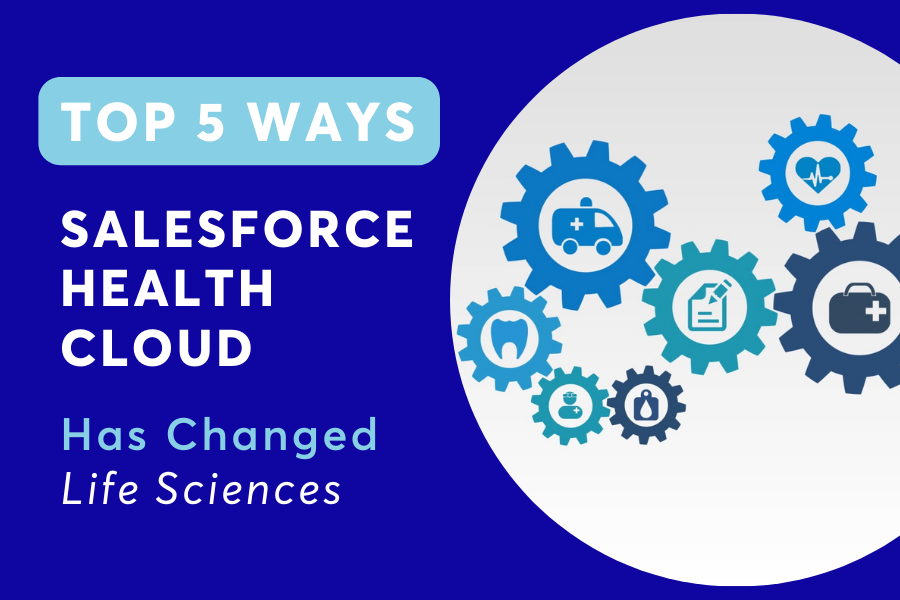
Top 5 Ways Salesforce Health Cloud has Changed Life Sciences
Before Salesforce Health Cloud, managing Life Sciences projects was a balancing act. But the Salesforce developers built Health Cloud to simplify everything from patient forms to insurance claims in a way that specifically suited this particular industry. Now, the scope for delivering quality patient experience has grown enormously, without increasing costs or estimated project timeframes.
What are the top benefits that Health Cloud has brought to Life Sciences?
1. Improved clinical data security and compliance
At its heart, Salesforce is exceptional at handling data. The basis of the CRM is to store, transfer, and share data safely with whoever needs it. For hospitals, GPs, pharmacies, and patients, this is an incredibly valuable communication channel. As standard, Health Cloud is HIPAA and HITRUST compliant.
2. Access to analytics to improve care experiences
Salesforce doesn’t just store your data; it helps you process it into helpful analytics. With the insights afforded by Health Cloud, organisations in every corner of the industry can learn from past patient experiences and help improve the experiences of future patients. Recommended treatments can also be devised more quickly by studying past successes, defined by groups of similar patients, so care is not only more effective but delivered faster.
3. Improved collaboration and communication
With Health Cloud, patients are encouraged to play an active part in their treatment, whether that is a clinical trial or ongoing treatment. The online patient portal allows them to check in on their progress, view their upcoming appointments, and see test results from their own devices. All communications to the patient can also be personalised, so not only do they benefit from the personal touch, but patients will also only receive communications that are strictly relevant to them. Health Cloud allows different professionals and teams, including providers and payers, to access and update the same central record. This streamlines collaborative care plans, notifying each team as soon as they are needed.
4. Reduced risk of human error
At some point in our lives, we have all fallen victim to a misspelt name or an incorrect house number. With Health Cloud, these risks are kept to a minimum. As all patient data is cross-checked between organisations, errors are flagged fast. Automated forms make data input easy, so nothing is left up to interpretation.
5. Get ahead with preventative care
Better understanding of past patient journeys helps clinicians take action faster when they identify an individual that may be at risk. Health Cloud allows for the segmentation of patients according to a range of different rules, including demographic, living environment, and specific medical history. In addition, it can help flag up patients who may need extra assistance in reaching medical facilities, ensuring that those who are eligible for preventative care are able to access it.
Without Health Cloud, data management, clinical collaboration, and patient communication are time-consuming tasks that put pressure on your clinicians and administrative staff. But, with Health Cloud, each of these areas is made manageable and project success rates skyrocket.
Read more about Salesforce for Healthcare and Life Sciences here.
To find out more about how Salesforce Health Cloud could change how your organisation works, book a 30-minute call with one of our solution experts. Or, take a look at our Discovery Mapping Programme to see what’s possible for you.

Discovery Mapping Programme
Book a free no-obligation call with our CRM Solution Experts.



